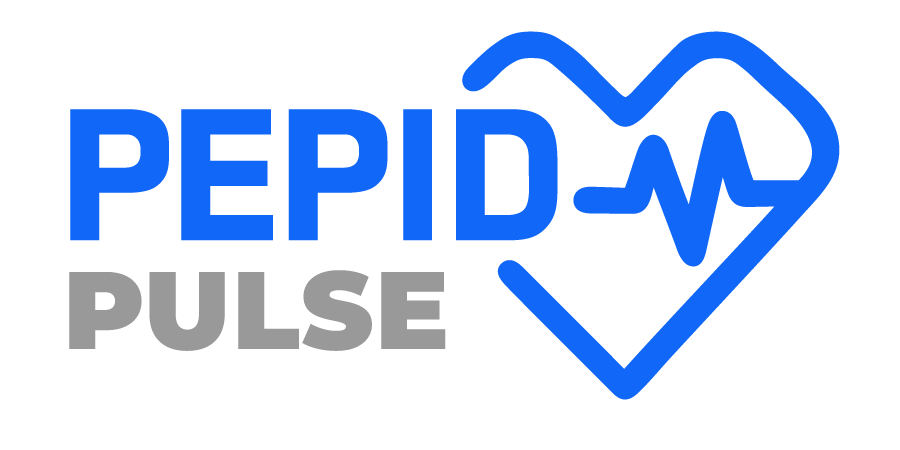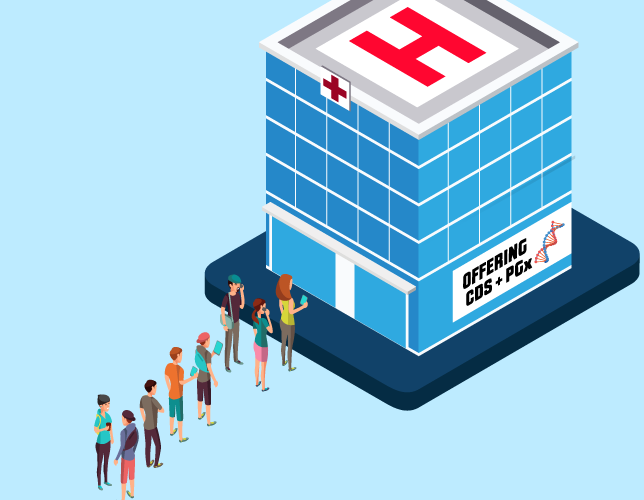Pharmacogenomics (PGx) is rapidly evolving from being a “luxury” diagnostic test to the healthcare standard millions of patients and providers have been waiting for.
Although PGx is a relatively new field, the R&D support and buzz behind it is growing exponentially thanks to an industry-wide shift towards more sustainable and value-based healthcare. The unique ability of pharmacogenomic testing to improve patient outcomes while decreasing healthcare costs makes it necessary for consumers to understand, demand, and implement it. 1
Despite the increasing amount of scientific evidence and expert opinions concurring over the benefits of using PGx in treatment planning and cutting healthcare costs, there remains a significant gap between the wealth of pharmacogenomic knowledge available, and its translation into clinical practice.11 This is a prime example of a systemic barrier to expanding access to quality healthcare, and one that health informatics aims to solve through promoting interoperability.
Armed with cutting edge submolecular technology and knowledge, and a goal to make affordable quality healthcare more accessible, what’s missing in the equation:
PGx + ___ = Expanded Affordable Quality Healthcare?
The Convenience of Complex Technology
Much of the security and conveniences healthcare consumers enjoy today are owed to great strides in health IT and interoperability – which not many know involves a stringently-regulated balance between capturing and securing standardized data, while allowing only qualified segments of said data to be instantly accessible anytime, anywhere for interpretation.
As quality measures shift towards providing and incentivizing value-based care, and individual genetic testing costs continue to shrink, more stakeholders are becoming increasingly discerning of the quality of care their health dollars are buying. Instead of signing up for the newest treatments on the market, consumers are now asking the question, “Is this the right fit?” This is where the wealth of data in human DNA meets health information exchange (HIE) technologies, such as clinical decision support systems (CDSS) to accomplish a new goal on a larger scale: Instead of selling more healthcare, focus instead on selling better healthcare at the consumer’s convenience.3
Instead of selling more healthcare, focus instead on selling better healthcare at the consumer’s convenience.
Interoperability is in action behind the scenes when a doctor can access the same dosing calculators and drug content the nurse’s station uses, on his iPad, and his colleague can corroborate from his Android phone. Another example is when a laboratory on the other side of town transmits a patient’s pharmacogenomic test results to his/her primary care physician and directly into the patient’s electronic health record (EHR) that has integrated a CDSS for disease/drug information, reactivity and sounder dosage calculations.
Today’s modern HIE capabilities have allowed the words fast, instant, and accurate to redefine what healthcare providers want out of a CDSS. However, just as each patient is unique, not all CDSS are created equally, in that not all CDSS are PGx-ready. Now that the concept of treating the person and not the population is gaining ground, a reliable and interoperable CDSS can fill the missing variable in the equation: PGx + ___ = Expanded Affordable Quality Healthcare. 3

Hurdles to Better Healthcare
Precision medicine can identify reactive genes and corresponding drug metabolizing enzymes to predict the likelihood of adverse drug reactions (ADRs), which comprise a majority of nonsurgical hospital admissions.9 ADRs cause emergency room visits, readmissions, extend length of hospitalization, and decrease quality of life as signs and symptoms of drug toxicity or the disease itself persist. This leads to unnecessary healthcare utilization and costs that stem from preventable drug-gene interactions (DGIs).10
Pharmacogenomic CDSS are commonly integrated into computer-based hospital information systems (HIS) or mobile applications, capable of providing passive or active clinical decision support. An example of active pharmacogenomic CDS is when high-risk prescriptions trigger a DGI alert, prompting providers to consider genetic testing or alternatives. In passive pharmacogenomic CDS, the user would have to delve into the system’s clinical information himself. The amount of PGx information available and still incoming can only be applied if the CDSS is ready for it. 11
If the formula, PGx + CDSS = Expanded Affordable Quality Healthcare adds up, why is true interoperability still met with resistance in the business of saving lives? What factors are preventing healthcare stakeholders from prioritizing integration of PGx information?
Some of the most commonly identified barriers to utilizing PGx and CDSS: 4, 6
Infrastructure
- Lack of IT structure that can readily provide CDS for gene-based treatments
- Majority of EHR systems are not configured for pharmacogenetic data
- Surplus of raw data requires secure storage until rendered actionable
Evidence of Clinical Utility
- Drugs with FDA labels containing PGx information are rarely used
- “Alert fatigue” and lack of clinician-friendly, immediately actionable reports
- Not enough randomized controlled trials
- Cost-effectiveness still depends on the price of genetic testing
Provider Issues
- Lack of preemptive PGx testing initiatives and slow result turnaround
- Need to outsource pharmacogenomic testing to external laboratories
- Lack of provider incentives
- Overly burdensome compliance policies and HIE fees
Prioritizing PGx ROI
Because of these barriers, adoption of PGx in everyday medical practice is slow and can still prove costly, especially when the benefits are weighed against a lack of conclusive studies.5 Some of the ways healthcare institutions are attempting to roll out pharmacogenomic testing is by prioritizing high-risk specialties/areas, and by identifying complex patients that are high-risk, have multi-system diseases and polypharmacy, or the need for multiple drugs to treat a single condition.4
Integrating PGx into CDSS can immediately improve patient outcomes in specialties such as surgery, anesthesia, cardiology and psychiatry, where the most commonly prescribed treatments require precise dosing, and are strongly linked to preventable DGIs. PGx can also prove immediately beneficial and actionable among patients with complicated conditions and prescriptions, as added pharmacogenomic insight and its seamless integration into a CDSS allows for a reduction in the following: 4
- Adverse drug reactions (ADRs) 8
- Failed clinical trials
- Time required for FDA approval 7
- Length of treatment
- Number of drugs prescribed
- Severity of signs and symptoms
- Emergency room visits and readmission 1
- Institution’s mortality rates
PGx for Patients, not Profit
Recent heightened interest in pharmacogenomics has led to a rise in stakeholders rushing to get PGx on their marketing strategy. Announcing PGx availability now plays a role in attracting patients, grants support to certain health systems, and drives healthcare providers to seek out better-equipped, more interoperable CDSS that help streamline their workflow and improve patient outcomes.
With a myriad of CDSS options available – all touting a trifecta of content, tools, and interoperability – there should be a careful consideration of the following criteria, which should point to a reliable PGx-ready CDSS worthy of your investment:
- Depth and transparency of peer-reviewed clinical and drug content
- Convenient and continuous evidence-based updates
- Clinician-friendly, actionable interventions
- Weighted drug and IV interaction checker
- Range of available dosing calculators and lab values
- Mobile and accessible, even in unfavorable conditions (i.e. natural calamities, power outages)
- Ability to tailor function and features to EHR systems already in place
- User-friendly interface that keeps the focus on the patient
While adopting and implementing pharmacogenomic testing and treatments does lend providers a competitive edge, doing so without prioritizing interoperability perpetuates profit as the be-all and end-all of healthcare. Stakeholders and policymakers alike need to align their incentives with what they are touting to achieve: the truly patient-centered goal of expanding access to affordable quality healthcare. 2
Resources
- “Pharmacogenetics Improves Health System Performance.” Thermofisher, Bruce Quinn Associates, LLC, May 2018, thermofisher.com/TFS-Assets/GSD/Reference-Materials/pharmacogenetics-health-system-performance-white-paper.pdf.
- Adler-Milstein, Julia. “Moving Past the EHR Interoperability Blame Game.” NEJM Catalyst, 18 July 2017, nejm.org/ehr-interoperability-blame-game/.
- D’Amore, John. “Why Quality Measurement Raises the Stakes for True Interoperability.” Health Data Management, 17 Nov. 2017, http://www.healthdatamanagement.com/opinion/why-quality-measurement-raises-the-stakes-for-true-interoperability.
- Elliott, Lindsay S, et al. “Clinical Impact of Pharmacogenetic Profiling with a Clinical Decision Support Tool in Polypharmacy Home Health Patients: A Prospective Pilot Randomized Controlled Trial.” Directory of Open Access Journals, PLoS ONE, 2 Feb. 2017, org/article/0b19b94ed103485789a8f333703ac668.
- Grosse, Scott D. “Genomics and Health Impact Blog.” Centers for Disease Control and Prevention, Centers for Disease Control and Prevention, 24 July 2017, cdc.gov/genomics/2017/07/24/is-pharmacogenetic-guided/.
- Klein, M E, et al. “Clinical Implementation of Pharmacogenomics for Personalized Precision Medicine: Barriers and Solutions.” National Center for Biotechnology Information, Journal of Pharmaceutical Sciences, Apr. 2017, http://www.ncbi.nlm.nih.gov/pubmed/28619604.
- Terry, Mark. “Cloud-Based Software Reporting of PGx for Hospitals, Health Systems and Clinical Laboratories.” DARK Daily, 15 Jan. 2018, http://www.darkdaily.com/a-lab-leaders-guide-to-pharmacogenomic-testing-pgx/.
- Verbeurgt, P, et al. “How Common Are Drug and Gene Interactions? Prevalence in a Sample of 1143 Patients with CYP2C9, CYP2C19 and CYP2D6 Genotyping.” National Center for Biotechnology Information, Pharmacogenomics, Apr. 2014, http://www.ncbi.nlm.nih.gov/pubmed/24798722.
- Weiss, Audrey J, et al. “Adverse Drug Events in U.S. Hospitals, 2010 Versus 2014.” Agency for Healthcare Research and Quality, Healthcare Cost and Utilization Project, Jan. 2018, https://www.hcup-us.ahrq.gov/reports/statbriefs/sb234-Adverse-Drug-Events.pdf.
- Marlen Schurig, A. et al. “Adverse Drug Reactions (ADR) and Emergencies: The Prevalence of Suspected ADR in Four Emergency Departments in Germany.” Deutsches Ärzteblatt International15 (2018): 251–258. PMC. Web. 4 Sept. 2018.
- Hinderer, Marc et al. “Integrating Clinical Decision Support Systems for Pharmacogenomic Testing into Clinical Routine – a Scoping Review of Designs of User-System Interactions in Recent System Development.” BMC Medical Informatics and Decision Making17 (2017): 81. PMC. Web. 4 Sept. 2018.


